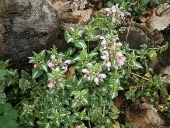









"the qualities of these bacteria, like the heat of the sun, electricity, or the qualities of metals, are part of the storehouse of knowledge of all men. They are manifestations of the laws of nature, free to all men and reserved exclusively to none." SCOTUS, Funk Bros. Seed Co. v. Kale Inoculant Co.














paul wheaton wrote:
Second,
If I were gonna play in this space, I think I would get a small amount and a whole bunch of sawdust. I would carefully make a big letter M in my lawn with the mycellium covered with a half inch of sawdust.
Then I would make a big letter S with sawdust.
Then kickback and see what happens.









paul wheaton wrote:
Pics would be excellent!
I would be powerfully tempted to get a lab coat, horn rimmed glasses and a clip board ... but that might not be your style.
"Although the world is full of suffering, it is full also of the overcoming of it." - Helen Keller
--
Jeremiah Bailey
Central Indiana




Jeremy Bunag wrote:
How can you tell if you do have some nice fungus working for you? The presence of mushrooms? Any mushrooms?
...
That leads to the question: Does the species of fungus matter, as long as it's not one of the yucky ones (like rust)?
Colonization was determined by evaluating the percentage of root segments with VAM fungi. The average colonization of plant roots from all soils was 8%, and the average Bray P1 soil-test value was 60.3 mg kg–1 (values greater than 30.5 are considered by the Iowa State Soil Testing Laboratory to be very high). Abundant colonization was unexpected in these high-P fertility soils because most authors report extensive colonization to occur mainly in plants growing in soils of low fertility. The VAM fungal spores were quite common in all rhizosphere soils sampled and ranged from 66 to 998 spores 100 g–1 soil. Total spore counts were significantly different among soil series (P < 0.001) and within soil series (P < 0.01). A negative correlation (P < 0.05) was found between soil organic matter, P, and VAM fungal colonization.
"the qualities of these bacteria, like the heat of the sun, electricity, or the qualities of metals, are part of the storehouse of knowledge of all men. They are manifestations of the laws of nature, free to all men and reserved exclusively to none." SCOTUS, Funk Bros. Seed Co. v. Kale Inoculant Co.














|
This tiny ad never wears a bra
Play Your Way to a Sustainable Lifestyle: Uncover Permaculture Principles with Each Card
https://gardener-gift.com/
|







